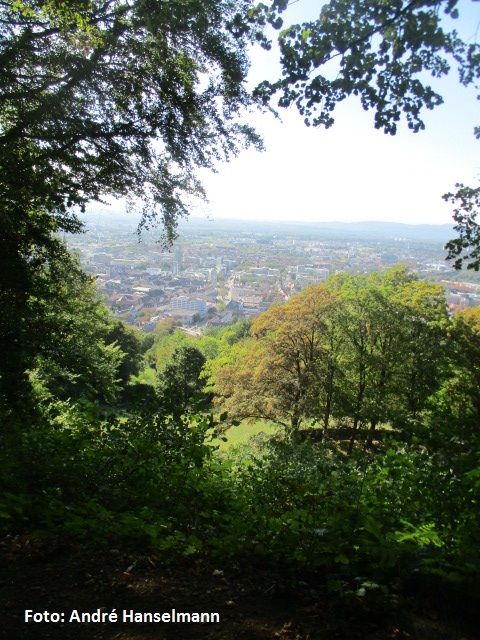Today I ask myself for what
the French fought and captured the town? Perhaps the death of Charles VII
changed all the French plans. Theoretically the town was sawn as a part of
Charles heritage and he had the chance to get a fine fortress. But very fast
the French decided to not stay in Freiburg but to destroy the fortress at the
hill and the town’s fortifications mostly planed by the French engineer-genius
Vauban. Even today visitors can see the remnants of the craters of the French
demolitions at the fortress.
 |
| Large contemporary bomb in the Museum of the town "Museum für Stadtgeschichte" in the Wentzingerhaus, Freiburg. Photo from 2018. |
 |
| The remnants of the Pulverturm (powdertower) near the Schwabentorbrücke. Note the depth of the trench even today. Photo from 2018. |
Modern archaeologists from
the Regierungspräsidium Freiburg discover more and more about the condition of
the fortress and the results of the latest detections are impressing. The
trenches of the city walls had a depth of 12 meters and enormous walls. The
archaeologists are finding more and more always when new buildings were raised
in the old town for example for the students of the university. Some of the
hand-grenades used during the sieges can be seen at the museum of the town in
the Wentzingerhaus. Dr. Bertram Jenisch (archaeologist from Freiburg, RP
Freiburg) assured the audience at an important colloquium[1]
about the warfare in Southwestern Germany that more finds would be presented to
the public soon.
 |
| A view on the trenches of the "Franzosenschanze" (French redoubt) built in 1744. Photo from 2018. |
Even today it’s not too
difficult to find relicts from the great siege in 1744. I visited the
“Franzosenschanze” near the Kybfelsen-area for several times. This redoubt was
built during the siege by the French and is laid out opposite of the fortress
on around the same level like the fort. Many contemporary maps show dozens of
such redoubts built by the besiegers.
| The entrance of the Franzosenschanze. Photo from 2018. |
Inside the redoubt. Note the Level of the wall of the redoubt at the right. Maybe that was the Level during the siege. I'm not sure about the function of the small redoubt, which was typical for the period and can be found on the contemporary maps of the siege, which Show many of such redoubts on that side of the Dreisam-valley.
Photo from 2018.
|
One of the main objectives was to blockade the Dreisam-valley to stop Austrian reinforcements (the Austrian high command never ordered any reinforcements to save Damnitz).
That is the end of my series about the siege of Freiburg. Please feel free to write a comment. Do you want more posts of that style?
I want to thank my wife and my kids, who were so kind to help me visiting all the places, which would have been very boring without them.
Text: André Hanselmann
Photos: André & Cecilia Hanselmann
[1]
Dr. Bertram Jenisch. „Archäologische Spuren von Festungen im rechtsrheinischen
Oberrheingebiet“ at the colloquium by the Alemannisches Institut and the
Landesamt für Denkmalpflege „Im Krieg ist weder Glück noch Stern“ Friday 15th
of june 2018, at Breisach























